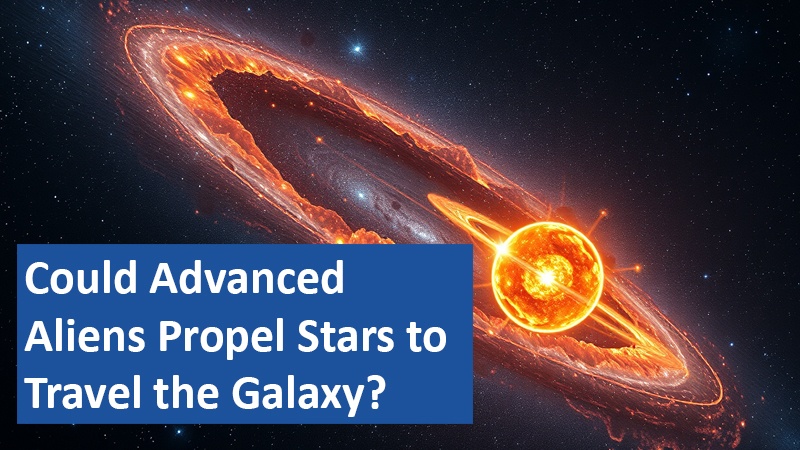A bold new theory proposes that intelligent alien civilizations could use their home stars as interstellar vehicles. By accelerating these stars, aliens might explore the galaxy while keeping their planets intact. While it sounds like science fiction, certain star systems exhibit characteristics that align with this concept.
By Aubree Ross
Stars as Galactic Transport Systems

The vast distances between stars pose immense challenges for interstellar travel. A solution proposed by researchers suggests that advanced civilizations might move their entire star systems instead of venturing out individually. By ejecting material asymmetrically from a star, they could create thrust, propelling the star in a desired direction. This innovative concept could allow these civilizations to explore the galaxy without leaving their home systems behind.
The Benefits of Binary Star Systems
Most stars in the universe exist in pairs, known as binary systems, which offer unique advantages for this type of movement. Philosopher Clement Vidal theorized that binary systems, such as a neutron star paired with a smaller companion, could provide greater flexibility for propulsion. By ejecting material unevenly, a civilization could create thrust to move the entire system. This setup could also allow for more precise steering and efficient energy use, making binary systems ideal for such a purpose.
Technological Feasibility
For a civilization to propel a star, advanced technology would be required to manipulate the star’s energy and material output. One method could involve using magnetic fields or devices to heat specific areas of the star’s surface, causing material to eject in a controlled manner. A machine placed near a neutron star, harnessing its immense gravitational energy, could regulate the direction and intensity of the thrust. Through careful activation and deactivation, the system’s movement could be directed across the galaxy.
Real Systems That Fit the Profile
Some known star systems exhibit properties that match this hypothetical model. Examples include the “Black Widow” pulsar PSR J0610-2100 and the “Redback” pulsar PSR J2043+1711, both of which show unusually high accelerations. Although these are unlikely to be manipulated by aliens, they serve as valuable analogs for studying such phenomena. Exploring these systems could deepen our understanding of cosmic mechanics and provide insights into the feasibility of this concept.
The notion of aliens moving stars offers intriguing possibilities for rethinking space exploration. Even without direct evidence, it highlights how much we have yet to learn about the universe’s mysteries.
Based on information from www.livescience.com and own research.